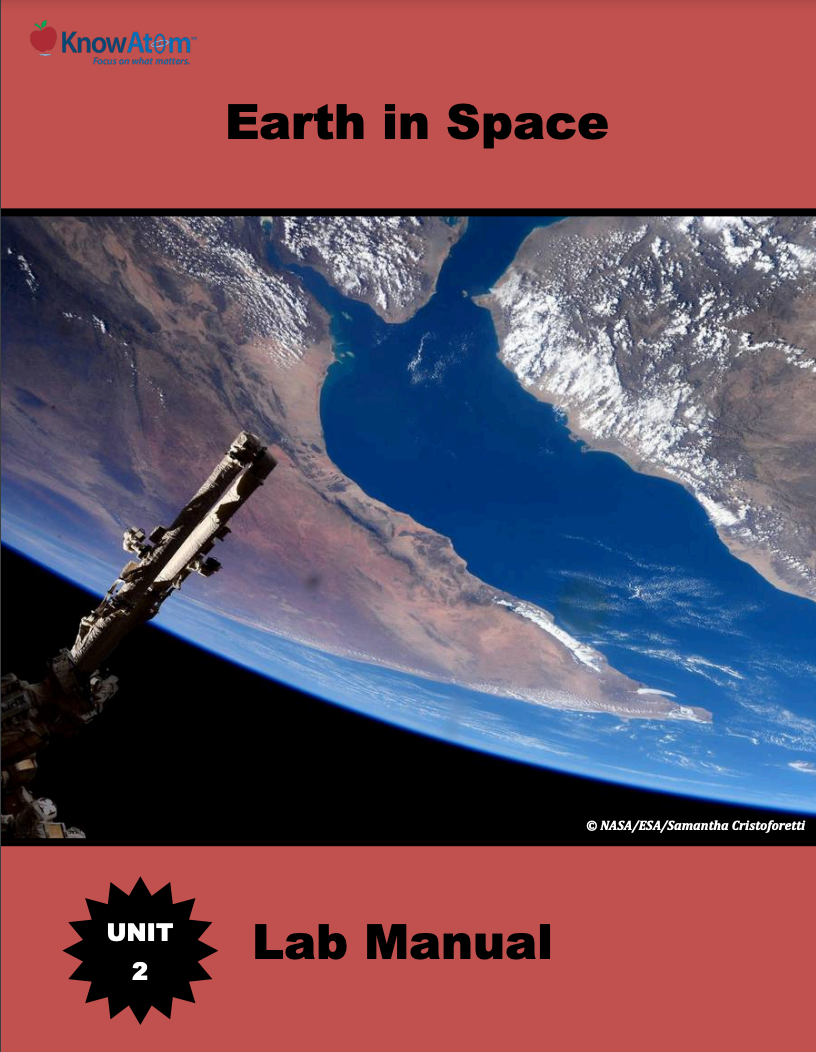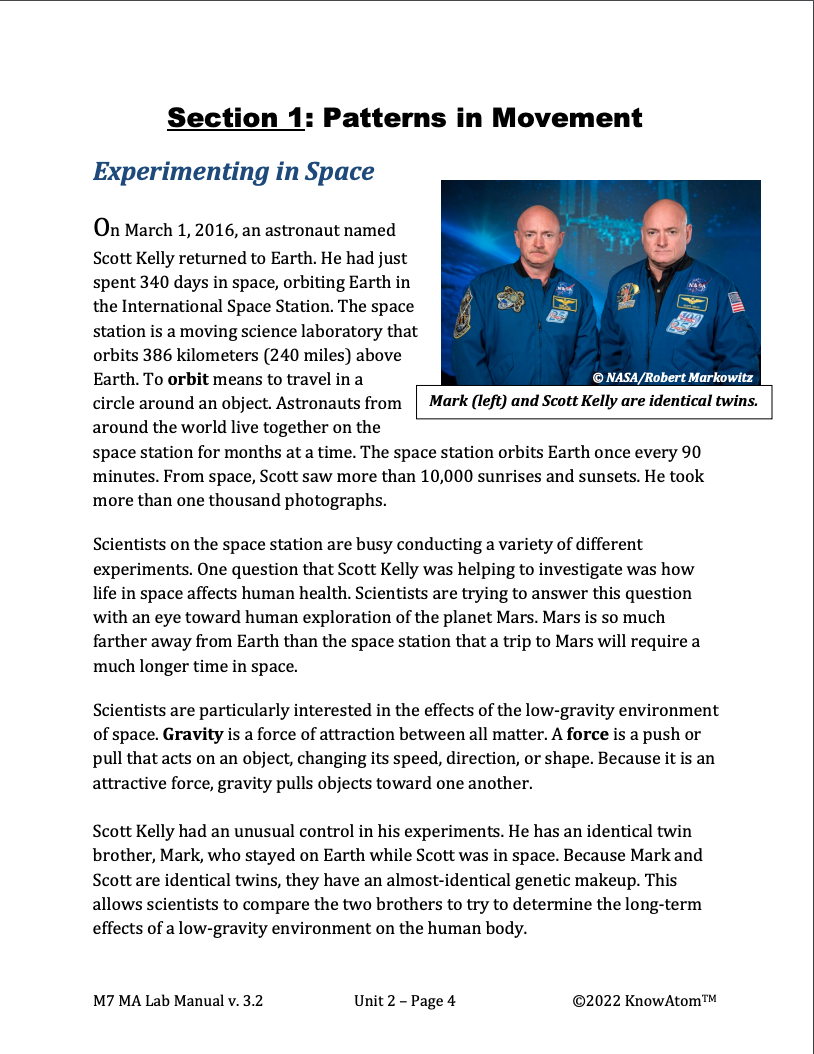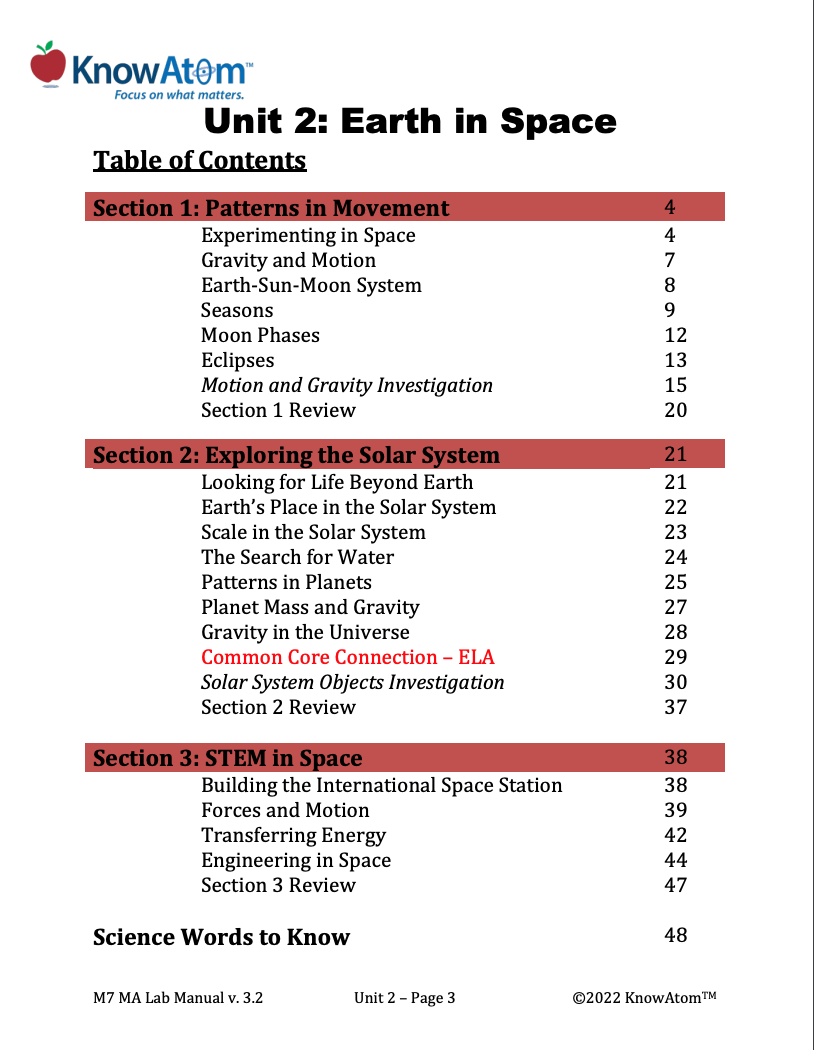Science background provides teachers with more in-depth information about the phenomena students explore. Below is an excerpt of the science background on Earth’s place in the solar system.
The Solar System
The Earth-moon system is one small part of a much larger system, called the solar system. A solar system is a collection of planets and other objects that orbit a sun. A sun is the star at the center of a solar system.
The sun’s gravity pulls at least eight planets into orbit around it: Mercury, Venus, Earth, Mars, Jupiter, Saturn, Uranus, and Neptune. In January 2016, scientists announced that they found evidence of a ninth planet far beyond Neptune, but that hasn’t yet been confirmed. A planet is a body that orbits the sun, is massive enough for its own gravity to make it round, and has cleared out smaller objects around its orbit; there are eight planets in our solar system. All of the matter in the universe, including all of the planets, is made up of the same elements that form all matter on Earth.
The four planets closest to the sun (Mercury, Venus, Earth, and Mars) are terrestrial planets because they have a rocky surface and a similar internal structure. They all have a central core made up of mostly iron, a mantle that surrounds the core, and a rocky surface with canyons, craters, mountains, and volcanoes. These planets also have few if any moons.
The four outer planets are called gas giants. They are much more massive than the terrestrial planets. However, they are less dense than the terrestrial planets because they are made up almost entirely of gas. The gas giants are also orbited by many moons and colorful rings made of rock, dust, and ice.
The solar system is so massive that scientists use scale models to understand the distances and sizes of the planets relative to each other. Remember that scale is the size, extent, or importance (magnitude) of something relative to something else. However, there is such a difference in size and distance between the different objects in the solar system that no one model can show everything. So scientists often compare planets using one scale property at a time.
One way to compare planets is distance from the sun. Our sun is much closer to Earth than any other star. In Earth terms, however, it is still very far away. It is 150 million kilometers (93 million miles) away from Earth.
Scale in the Solar System
At this distance, it takes sunlight eight minutes to travel from the sun’s surface to Earth. Mars is 229 million kilometers (142 million miles from the sun). Neptune, the farthest planet from the sun, is much farther. It is 4.5 billion kilometers (2.8 billion miles) from the sun.
Scale is also helpful when thinking about the size of the different objects in the solar system. For example, the sun is the most massive object in our solar system. Its diameter is 1.4 million kilometers (865,000 miles) wide. In comparison, Earth’s diameter is 12,756 kilometers (7,926 miles). Mars is only 10 percent as massive as Earth, with a diameter of 6,792 kilometers (4,220 miles). If the sun were the size of a typical front door, Earth would be about the size of a nickel.
Jupiter, the largest planet in our solar system, would be the size of a basketball. Mercury, the smallest planet, would be the size of a pea.
Exploring Mars
Mars is the most explored planet beyond Earth. This is because scientists want to send humans to Mars in the future. Before this can happen, however, they need to learn more about the planet and how it will be able to support life. To do this, scientists are collecting data about Mars in a variety of ways.
For example, since August 2012, a moving science laboratory the size of a car has been exploring the surface of the planet Mars. This laboratory is actually a rover called Curiosity. A rover is a robot that drives around. Curiosity has been busy since it first landed, drilling holes, collecting rock samples, and taking pictures of its surroundings.
Curiosity has a wide range of scientific instruments, including a 2-meter (7-foot) arm that can pick up samples from the surface. Once inside the rover, those samples can be heated so the rover can then “sniff” the gasses that are released to look for clues about how the rocks and soil formed.
The mission of Curiosity is to study the Martian climate and geology. Geology is the study of a planet’s structure, as well as the processes that have shaped it. The goal of the mission is to determine whether Mars has ever been able to support life.
Curiosity is just one way that scientists are gathering data about Mars. In addition to Curiosity, there is another rover called Opportunity collecting data from the planet’s surface. There are also three NASA spacecraft orbiting Mars. These spacecraft are collecting data about the planet’s climate and structure.










